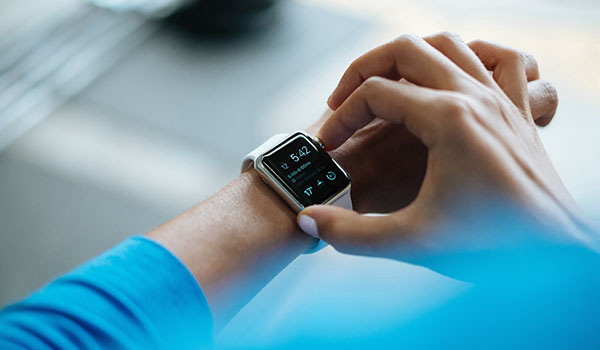
Over the past few years, wearable fitness devices have increased in popularity. According to the NPD Group’s Wearable Technology Study, which was released in January 2014, one in three consumers was aware of wearable fitness trackers and 28 percent of those people were likely to buy one. Undoubtedly, the number of people who use fitness trackers has only grown since the release of that study as new and improved versions constantly hit the market.
There are a that offer the ability to track your health and sync to your wellness portal. Fitbit, the most popular fitness tracker in 2015, accounted for 79 percent of sales of the devices, according to an article on ZDNet. The same article also noted that spending on wearable devices doubled in 2015 to $1.46 billion in sales. In addition to Fitbit, other popular wearable brands include Jawbone, Samsung and Apple.
While the popularity of the devices is definitely linked to an increased interest in monitoring health, the new sleek and discreet designs make it easy to incorporate the fashionable devices into your everyday wardrobe.
While fitness trackers have been gaining popularity among the general population, they’ve also become an integral part of corporate wellness programs. By 2018, it is predicted that more than 13 million wearable fitness trackers will be used as a part of employee wellness programs, according to ABI Research.
Wellness portals, such as MediKeeper, can track the number of steps or calories burned, sync to any wearable device and report the progress on an easy-to-access dashboard.
Benefits of Incorporating Wearables Into Your Wellness Program
There are many reasons to add wearable fitness devices to your wellness program. Here are a few of the major reasons why companies have been interested in incorporating these devices:
- Improves Accuracy – With wellness programs often using incentives and rewards to encourage employees to participate in activities, the use of wearable tracking devices is becoming increasingly important. When paired with social challenges, the use of wearables becomes even more vital. Wearables automatically sync the data to wellness portals, which ensures the validity of the results. Whether it’s reporting the number of steps walked, calories burned or minutes of physical activity, the tracker helps keep challenges fair and lowers the possibility of errors in data reporting.
- Encourages Healthy Lifestyle – Before wearable devices became popular people had to manually record their health and fitness data, which was a difficult and time-consuming task. Now, thanks to wearables, people can go about their day as usual and have the data sync to their computers or phones. This makes it much easier for people to track their progress and set goals while freeing time for other important tasks.
- Promotes Social Activity – Since the data collected by wearable devices is automatically uploaded to the wellness portal, it makes it simple for participants to monitor their health and fitness levels and compare the results to their peers via social networks. This can encourage a team-like environment where others can offer support and help you reach your goals. People are also more likely to actively participate in a wellness program when they are socially connected and invested in the results, such as not letting down your teammates.
Benefits of Using a Wearable Device for Employees
Of course, using a wearable fitness tracking device has a lot of benefits for the individual as well as the company. After all, it’s a lot easier to convince someone to do something if it enhances their lifestyle as well. Here are a few reasons why people are choosing to incorporate wearables into their every day lives:
- Additional Features – In addition to the basic fitness features, wearable devices also serve various practical purposes. From checking the time to alerting you to calendar reminders, wearables help you keep track of your busy schedule. Some can even notify you of calls and texts so that you’re always in the know while you’re on the go.
- Meet Personal Goals – While companies want to have a healthy staff, individuals are also interested in meeting their own health goals. Wearable devices make it easier for people to challenge themselves and beat their personal bests, whether it number of steps walked or calories burned.
- Appearance Matters– Thanks to a multitude of different designs, it’s easier than ever to find a wearable device that meshes with your personal style. In fact, many devices look so stylish that they practically blend in to your outfit and are often mistaken for a watch or bracelet. These sleek, fashionable versions make it easy to discretely keep track of your health.
Questions to Ask Before Integrating Wearables Into Your Wellness Program
- What is the Budget? – While wearable devices have become more affordable over the past few years, they’re still not cheap, especially if you have a large company. Consider offering the devices as an incentive for employees who join the program or who reach certain goals instead of purchasing for every employee to cut costs. You can also send your employees a survey to find out how many people are interested in using a wearable device or how many people already have one to help create your budget.
- What is the Right Device for my Program? – Wearable devices often have a lot of similarities but there are distinct features to take into account. Think about what features are most important to you and will best help your company keep track of its employees health. Make a list of the most wanted features to help you choose the right match among the vast sea of options.
With all of this information, it’s easy to see why wearables have become commonplace in the world of wellness programs. Are you ready to make the leap?

